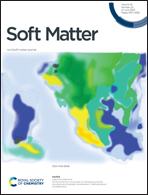Confocal Raman microscopy to evaluate anisotropic structures and hydration development. Methodological considerations†
Abstract
Confocal Raman microscopy is a promising technique to study structural complexity of multi-phase foods and soft materials. This technique overcomes the limitations of traditional microscopic techniques, such as the inability to identify water regions or to map the composition of various phases in situ, without sample disruption or the addition of specific dyes. The objective of this work was to carry out a systematic study on a well-understood model food, pizza cheese, establishing a methodology for data acquisition and handling for confocal Raman microscopy studies of anisotropic protein structures. The study demonstrated that conventional confocal microscopy remains an important tool to study the structure of protein networks. However, confocal Raman microscopy brings added value in the observation of components distribution, for example, water distribution in the protein phase during storage, using line scans or area imaging, and to detect spatial heterogeneities. This research compared different means of processing spectroscopic data, and demonstrates the critical importance of data handling, advocating for detailed methodological descriptions to better compare research results.



 Please wait while we load your content...
Please wait while we load your content...